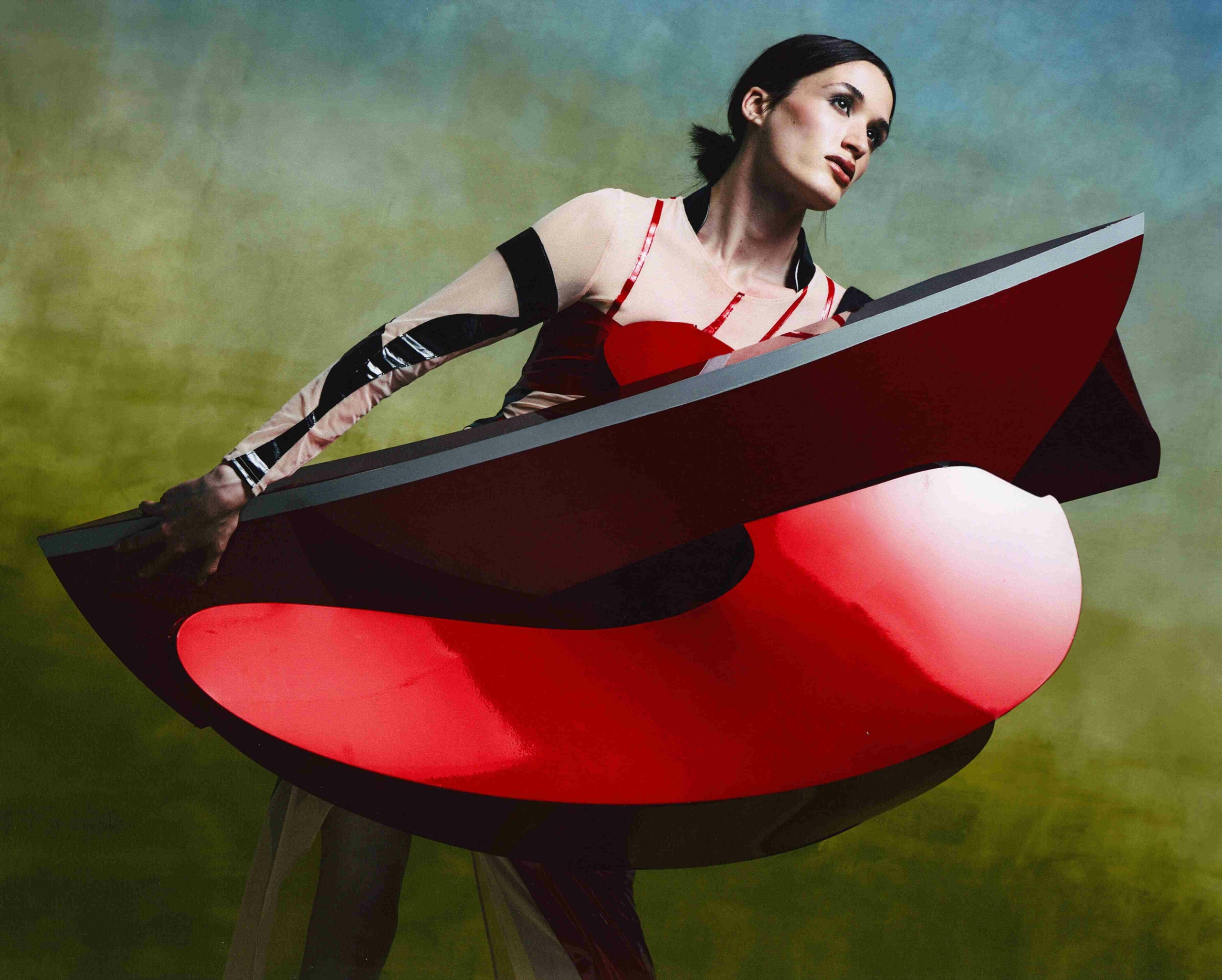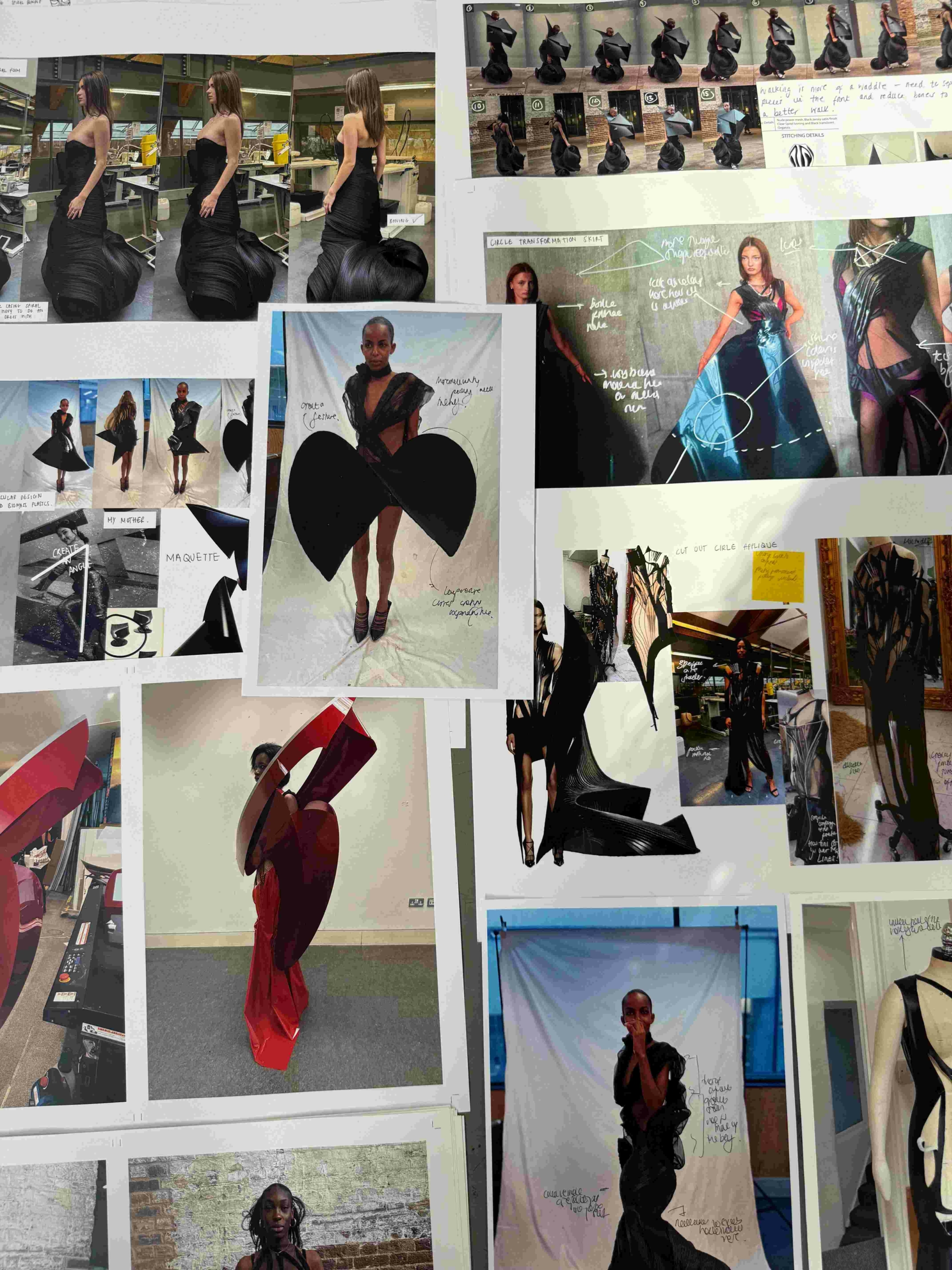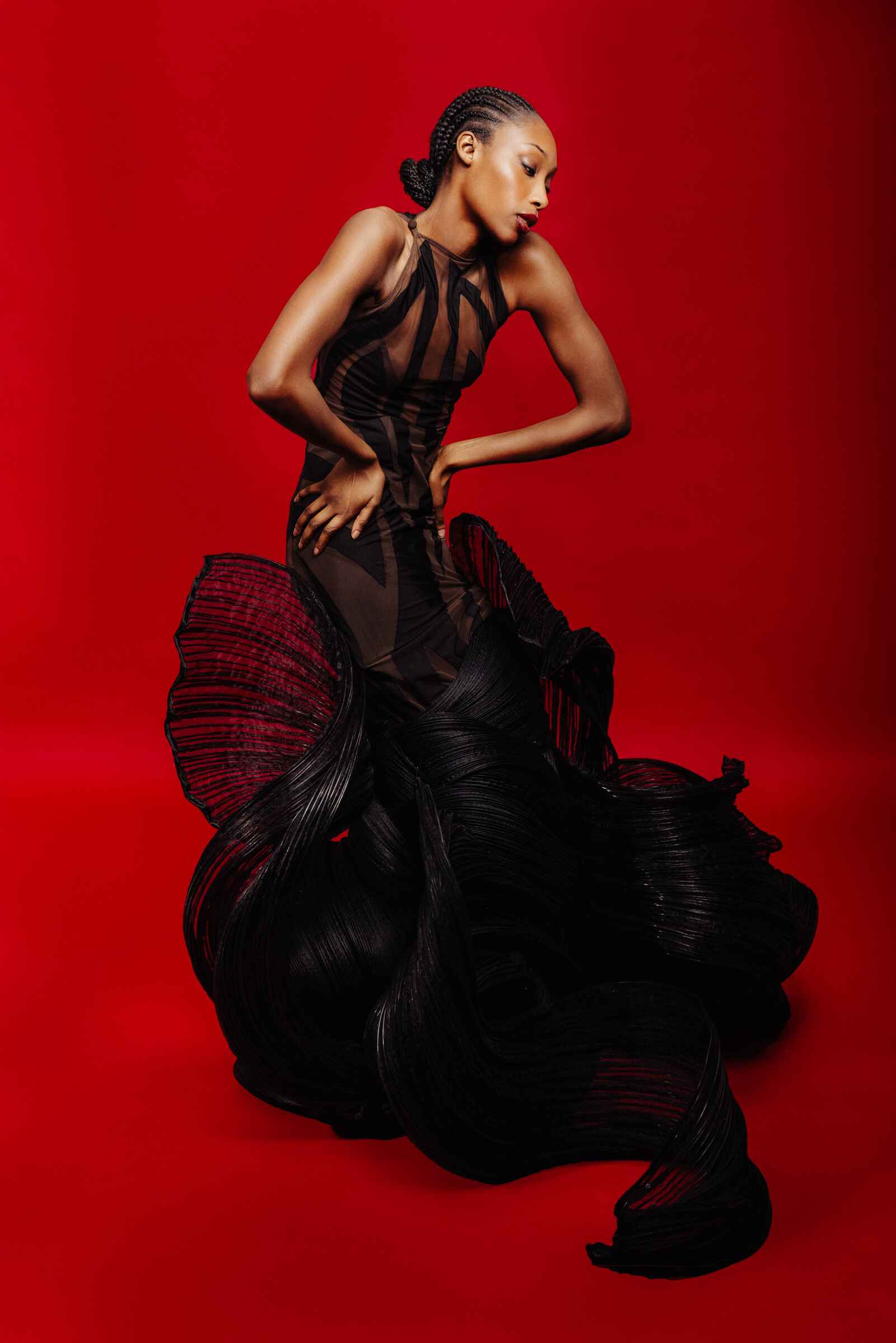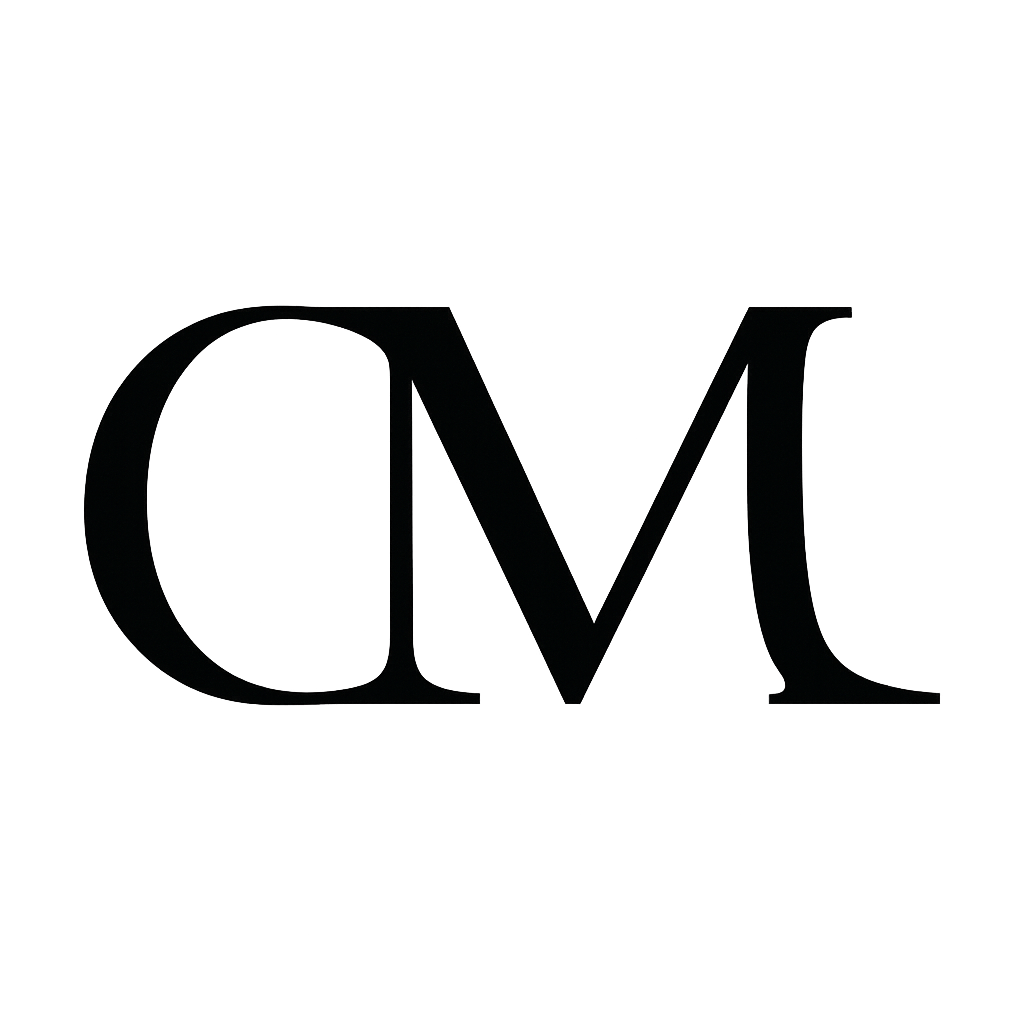We linked up with the CSM BA graduate Saranya

©️ CSM BA Graduation Collection by Saranya
Earlier this month, Central Saint Martins Bachelor’s students presented their long-awaited graduation fashion show — a celebration of boundary-pushing creativity and months of intense preparation. Among the standout voices this year was Saranya, a young designer whose work blends technical innovation with personal and cultural storytelling. We spoke to her about navigating the CSM experience and her graduation collection.
Tell us about your journey at CSM.
“I actually started with the fashion folio course, like most people do, and I had really good mentors. They trained me to build a kind of ‘CSM-style’ portfolio. I feel like at Central Saint Martins, you can be really talented, have great design ideas, or be very driven — but there’s also a sort of code, or language, that’s very specific to the institution.
During fashion folio, I started to understand what that was and why it matters. It showed me the importance of doing boundary-breaking work, of being extreme or different — especially as a young designer in the industry.
After that, I got into the BA and developed more technical skills and design methods to express unique ideas. And now, hopefully, I’m at a stage where I can bring ambitious concepts to life using everything I learned during my time at Saint Martins.”
What makes CSM’s ‘design language’ unique?
“This might be a really extreme comparison, and I’m not saying it represents the whole cohort — but think of how radical Galliano was at Dior in the context of creative directors throughout time. That kind of extremity in design is exactly what they encourage at Saint Martin’s.
They want you to speak that language as a student or developing designer. They really push you to step outside not just your own comfort zone, but the industry’s. Whether your work is liked or not, whether it looks good or not — it has to say something. It should mean something to someone or speak to a particular issue in the world.
If you come from a specific cultural background, for example, they really encourage you to build from that — focusing on storytelling and narrative over purely technical skills. That’s what they train you for at Saint Martin’s. It’s more of a mindset than a method.”

Tell us more about your graduation collection.
My graduation collection was inspired by the talent of South Asian women. I’m really passionate about representing my culture — my family is Sri Lankan.
For a long time, I used to shy away from incorporating that into my work. I thought it might come across as too cliché or distasteful to mix traditional clothing with contemporary fashion. But over time, I realized it could be done in a thoughtful and meaningful way — something modern that still honors the tradition.
For example, my mum used to be a well-known dancer in South Asia. She wore these beautiful, saree-inspired outfits on stage, and I took elements of those looks and reimagined them in a more contemporary way. That approach felt really true to me.
I wanted to represent her talent and the generations of women in the South Asian community — women who were incredibly gifted but often couldn’t fully explore or express their talent because of societal or cultural limitations. I tried to channel all of that into the collection.
Honestly, I feel very privileged to be able to work in fashion — it’s not something everyone has access to. Especially studying at Saint Martin’s, I felt a responsibility to use that platform to say something meaningful about the power of women in our culture and how far we can go.
There aren’t many of us in the industry, and I do want to be someone who helps open up a way to getting there — even if that sounds a bit pretentious.”
What was the preparation like for the graduation collection?
“The preparation really starts in the final year. The first two years are focused on various projects — some are team-based, and some are with industry partners. For example, I worked on collaborations with Canada Goose and Balenciaga during that time.
Then we take a placement year, which is essentially a year out to work in the industry. I spent six months at Dior and three months in Spain with a brand called Onrush.
After that, you come back to do your final year, which is fully dedicated to the graduation collection. From September to May, it’s all about research, design development, prototyping, sampling, and toiling. Then you rehearse and prepare for the final showcase. It’s an intense but rewarding process.”
The spiral dress from the collection …
“The dress is very personal to me, as it was inspired by one of my mum’s dance costumes. I wanted to take elements from what she used to wear and reimagine them. The skirt was made using a spiral technique, with around 150 circular spiral boning pieces encased in organza. When assembled together, a really dramatic, wavy, voluminous silhouette was created.
And I think that really represents my kind of artistry. I really love circular, voluminous design and unorthodox materials. I also work with recycled elements — like recycled Perspex — to create car-like, motorsport-inspired shapes. That process really challenged my imagination and my technical abilities.
For me, this piece was about more than design — it was about modernising my culture while pushing my own limits as a designer. I think that balance between tradition, innovation, and engineering really defines where I am creatively right now.”

©️ CSM BA Graduation Collection by Saranya
What are your future plans?
“Last year, during my year in industry, I started a small shop — and I genuinely enjoyed it. I’ve realised that I actually love the business side of things just as much as the creative. I enjoy the admin, the structure, and everything that comes with running something independently.
So this year, my plan is to relaunch the shop and really focus on pushing my brand — especially when it comes to PR, marketing, and visibility. I want to grow it in a thoughtful and strategic way.
I’m not planning to do a master’s right now. Maybe next year, if I feel the need to go back into education, I’ll reconsider. But I honestly feel like I learned so much during the BA, and I really liked who I became through that process.
At this stage, I just feel ready to focus fully on my own work and build something from the ground up.”
Which designer has inspired you most?
“Azzedine Alaïa — definitely. The original Alaïa will always be a huge inspiration to me. I know some people might think his aesthetic is quite different from mine. I probably lean more toward Mugler or Rick Owens in terms of style, but what I admire in Alaïa’s work is the craftsmanship.
His technical skill was on another level — so refined and detail-oriented. His silhouettes were hyper-feminine, incredibly flattering, and so timeless. A lot of what we see today in ready-to-wear still carries traces of his original designs, which really shows the impact he had.
That level of precision and elegance is something I deeply respect, even though my own work is often more experimental.
At the same time, I do love Yohji Yamamoto, Pierre Cardin, and other contemporary luxury designers who push boundaries in their own way. But Alaïa’s legacy — his precision, discipline, and influence — will always make him someone I look up to.”
